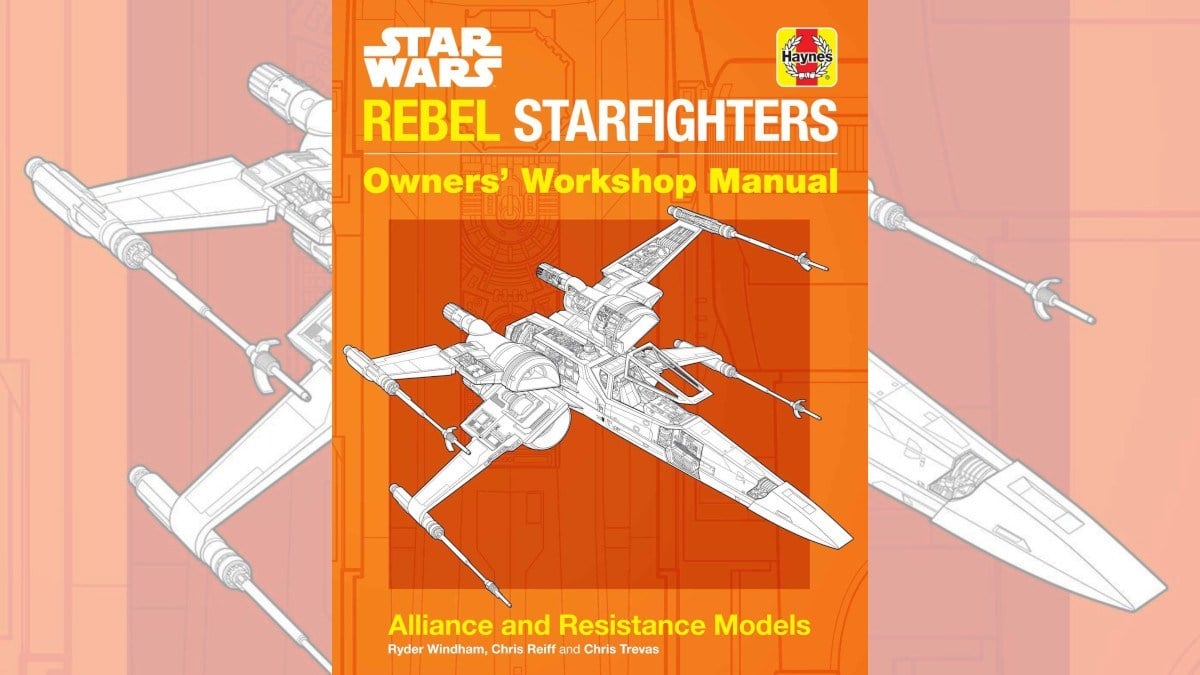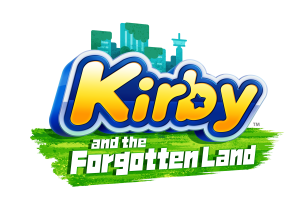The Artemis Project remains one of my favorite games. Now, it’s sequel is here, and promises to be just as good a game.
What Is The Artemis Odyssey?
GeekDad Approved The Artemis Odyssey is a game for 1-5 players, ages 14 and up, and takes about an hour to play. It’s currently seeking funding on Kickstarter, with a pledge level of $55 for a copy of the game.
The Artemis Odyssey was designed by Bruno Faidutti and Serge Laget and published by Grand Gamers Guild, with illustrations by Josh Cappel.
New to Kickstarter? Check out our crowdfunding primer.
The Artemis Odyssey Components

Note: My review is based on a prototype copy, so it is subject to change and may not reflect final component quality. In particular, the playing pieces in the prototype, shown below, do not resemble the planned final pieces at all.
In the box, you will find:
- 1 planning board
- 55 action cards, 11 in each of 5 colors
- Playing pieces, with 4 of each in the 5 colors:
- Starships
- Colonies
- Factories
- Terrformers
- 5 score markers
- 9 star tokens
- 17 alien artifact cards
- 42 planet tokens, with 6 each for each type of resource plus 6 alien planets
- 150 resource cards, 25 of each resource type
- 1 first player token
- For solo and 2 player modes:
- 13 singularity cards
- 1 singularity token
- 5 mission cards (solo mode only)
As noted above, none of the playing pieces in the box resemble at all the final artwork for the game. Instead, the prototype merely uses pieces recycled from other games. However, given past products from this publisher, in particular The Artemis Project, I have no doubt that the final version of the game will have gorgeous playing pieces.
The artwork on the other pieces is presumably closer to finished.

The planning board shows a row of ten spaces for cards used during the game, and a score tracker below that. As playing cards to this board is one of the key mechanics in the game, it’s nice that this is kept simple. The score tracker makes it easy to see where you’re at during the game, and the hexagonal spaces will match the eventual final pieces used on the board.

Each player has an action deck in their color. The distribution of the cards within each deck is the same: each player gets four scoring cards, three production cards, two travel cards, and one each of the trade and build cards. However, the resource and travel cards are different within each deck; I’ll explain more on that in the “How to Play” section. Here again, the art is simple and focused: the bottom half or so of the card features a large icon showing which type of card it is, while the top portion shows icons with the details of how that card plays. The lower section with the card type icon is in the player color, making it easy to tell at a glance whose card this is.

The backs of the cards feature a drawing of an alien race. This isn’t at all important for the game, but the pictures are very nicely done, and the style of art fits into the bigger Artemis gametic universe.

The star and planet tokens are also nicely done. The stars represent our sun and eight other stars, each named for a sign of the zodiac: Aquarius, Aries, Libra, Pices, Cancer, Leo, Scorpio, and Sagittasius. These names have no bearing at all on game play either, but in addition to the symbol printed on each planet, there is also a cool representation of what the star itself might look like. It’s all visual flair, but it’s much more interesting than just having nine stars that all look like normal suns.

The planets show what the planet would look like, with a small icon for the resource type produced by the planet. They’re all nicely color coded, but one small quibble with the artwork of the game I would have is that the resource icons on these should be a lot bigger and easier to see, as that’s the important element for game play.
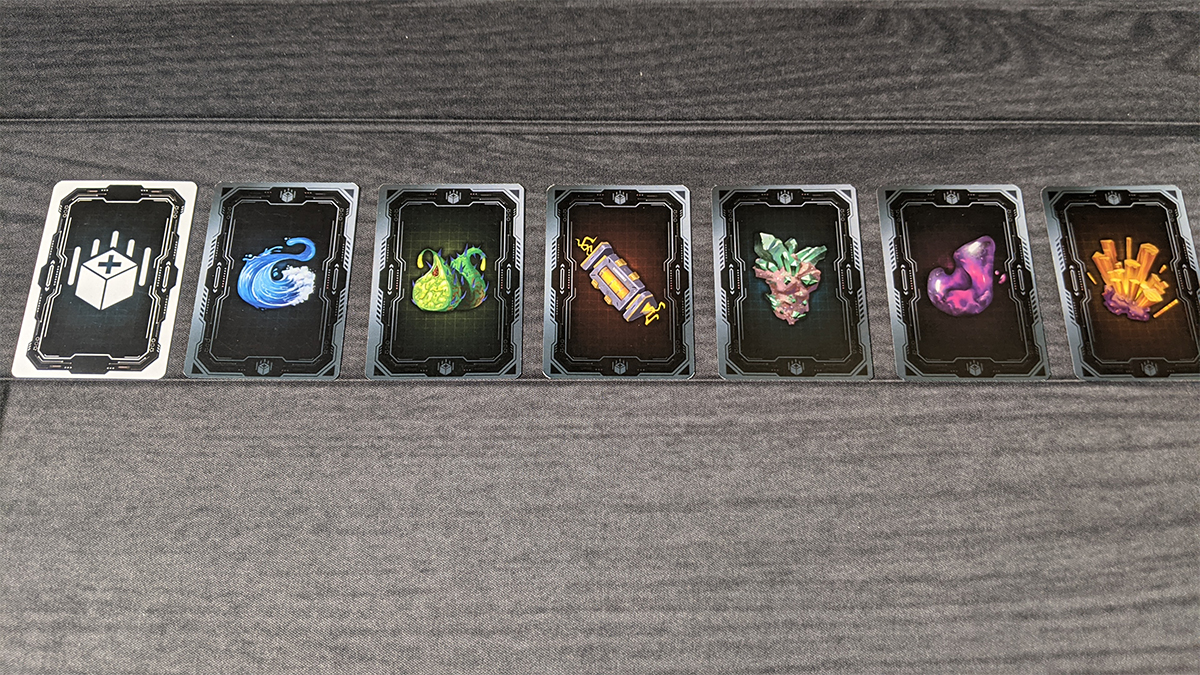
The resource cards simply show a large drawing of each resource. Two, I think, are obvious representations: water and energy. Two of the ore types are likewise obvious. The rest are more abstract, with food looking like some kind of weird green plant, and the final ore being some kind of purple blob. At first glance they’re all kind of weird, but players can generally figure them out quickly, with the only potential lasting confusion being differentiating the three ores. However, that’s not really an important factor, as the ores all serve identical roles in the game. And most importantly, the icons are color-coded to their matching planets.

Unlike the action and resource cards, which are 44mm x 68mm, the alien cards are closer to poker-sized. They feature the alien planet on the back, but the front of each card is unique, showing a large piece of art and then instructions on how and when the card can be used.
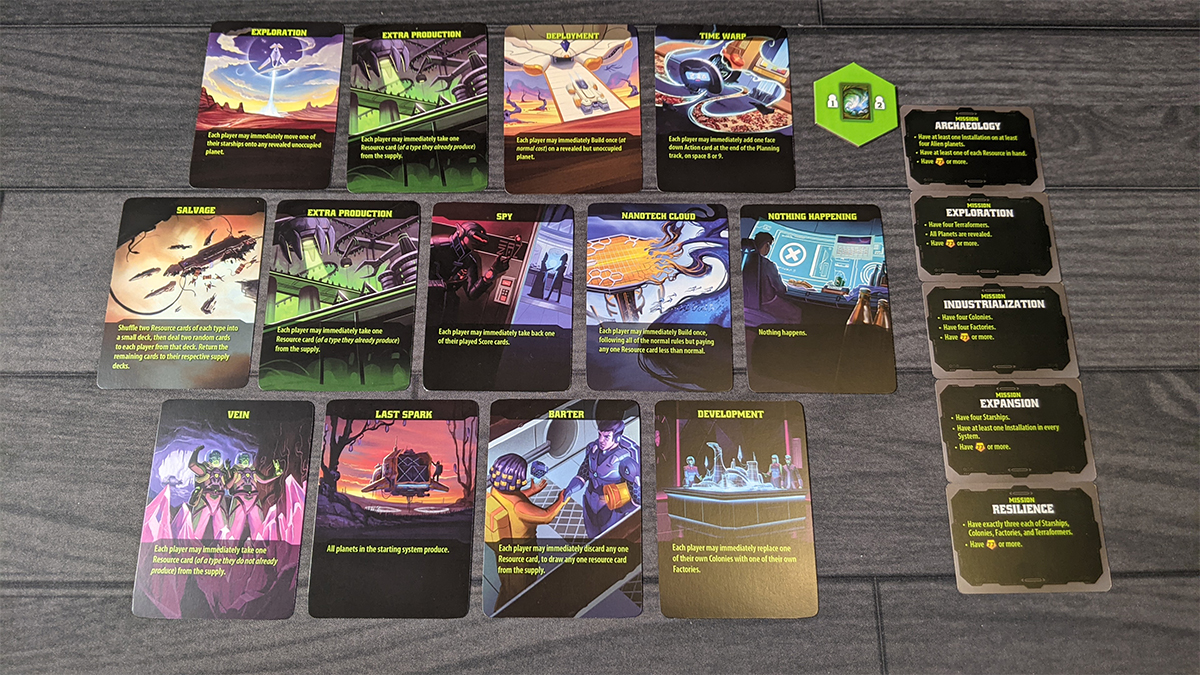
For the solo and 2 player variants, the game includes a set of singularity cards and a singularity token. The solo game also relies on a set of mission cards.
How to Play The Artemis Odyssey
You can download a draft of the rulebook here.
The Goal
The goal of the game is to be the player with the most points when the last planet is discovered or when a player reaches or passes 77 points.
Setup

Each player chooses a color and takes the components of that color. This includes the deck of action cards, the starships, colonies, factories and terraformers, and their score marker.
If playing with three people, two alient planets are returned to the box. With four players, one alien planet is returned.
Then, all nine stars are placed on the table. The positioning doesn’t matter at all, but they need to be placed far enough from each other that planets can be placed around them.
Take one of each of the six resource planets (not including an alien planet) and place it face-down around the sun. Then, each player, in any order, chooses one of these planets, flips it over, and places a starship and a factory on it. The remaining planets are returned to the supply.
All of the remaining planets, including the unused ones from the sun and the alien planets, are flipped to their back sides, shuffled, and distributed around the other stars. Each star needs no less than three planets and no more than seven, but the actual distribution should be as random as possible. The resource cards are then separated into individual decks, which are placed in reach of everyone. The alien artifact deck should be shuffled and placed nearby. The planning board is placed somewhere on the table within everyone’s reach. Several of the spaces on the board have icons indicating that they are not used with certain player counts (for example, the “10” spot is only used in a 5 player game); a terraformer piece from an unused player color should be placed on these spots so that they are not accidentally used.
Each player takes one of each resource card, and places their scoring token on the “7” spot on the score track. A starting player is chosen at random.
Gameplay
The game is played over a series of rounds, with each round divided into phases.
Planning Phase
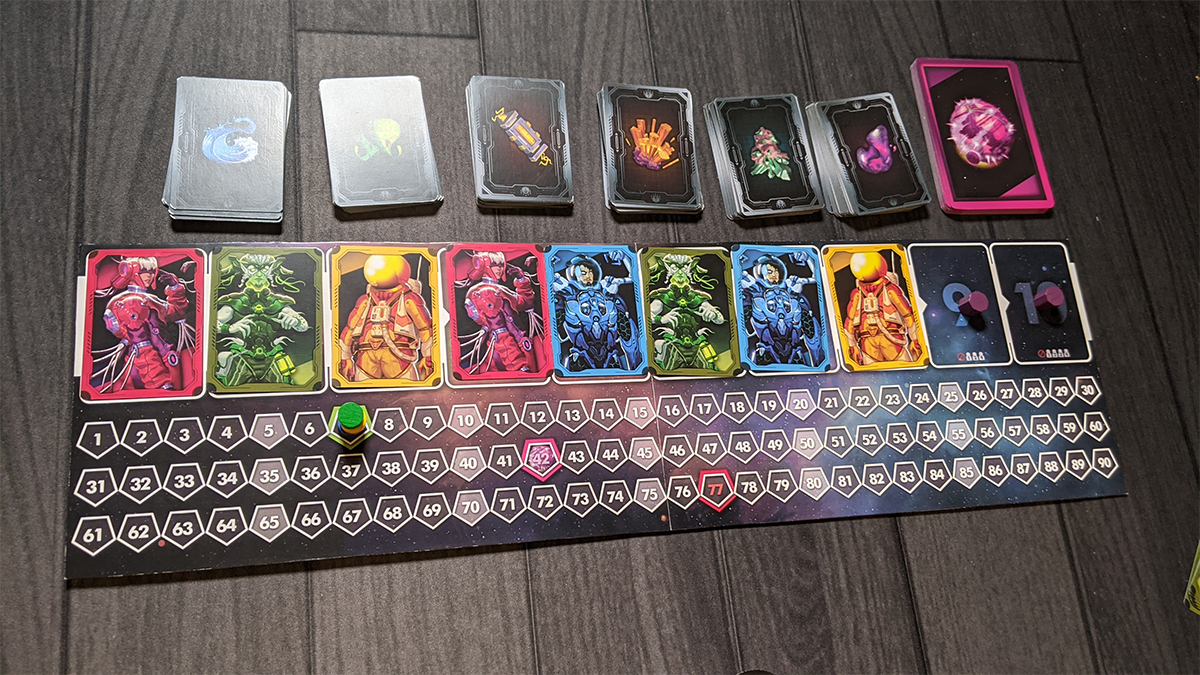
In the planning phase, each player will take one of their action cards and place it, facedown, on the planning board. The phase starts with the starting player and proceeds clockwise. On their turn, each player places a single card in an open space on the board. The spaces do not need to be filled consecutively, but they will be resolved in numerical order.
Action Phase
One every available slot on the planning board is filled, the first card is flipped over and resolved. Then, each additional card is flipped and resolved. Once all of the cards have been resolved, a new phase begins unless the end condition is met.
The Action Cards
Produce

As noted above, each player has three production cards in their deck. Each of these cards shows two of the possible resources. When the card is revealed, the planner–the person who played this card–chooses one of the two resources on the card. Every player then receives that resource if they have planets that generate it. They get one card for each starship or colony they have on a matching planet, and two for each factory. Alien planets never produce resources regardless of the assets on them, and terraformers never produce resources even if they are on a production planet. It’s important to note that while all players have three of these cards, the distribution of the resources among the cards varies.
Travel

Each action deck also has two travel cards. Each card shows three of the systems. The planner chooses one of the systems on the card and may them move one of their starships to a planet in that system. Note that the distance between systems is irrelevant; all starships can reach all systems regardless of their starting point. One the planner has either moved or chosen not to, each other player may move on starship to the same system. The planner, however, determines the order in which the other players may move, and it may not be possible for everyone to move.
You may only travel to a planet that either has no assets on it or other assets you own; you may never travel to a planet owned by someone else. You may travel to an undiscovered planet (one that is facedown) or to one that has been discovered (face up). When traveling, you may peek at each planet in the system before deciding to which planet they wish to travel.
It is possible for the planner to choose a system one of their starships is already on simply to move to a different (available) planet, and possibly, to prevent other players from being to move at all if that would mean that there are no other planets available. Players can also choose to “abandon” a planet that only has a starship on it by moving that starship somewhere else; that planet would then already be discovered but available for others to move to later.
When you discover a production planet by flipping a facedown planet over, you immediately gain one of that type of resource from the bank. When you discover an alien planet, you draw one card from the alien artifact deck for each alien planet on which you currently have assets. You choose one card to keep and discard the rest.
A key strategy point here: each player has two travel cards, and each card has three systems. This means that there are two systems that you cannot travel to by playing one of your cards; you can only get there when another player who has that system on one of their cards chooses to travel to it. You should therefore be aware of the systems you can get to, and make sure that you take the opportunity to travel to those other systems when those cards are played. The starting system (ours) cannot be traveled back to, as it is not represented by any action card (although there is one alien artifact card that will let that player get back there.)
Trade and Build
Each deck contains one of each of the trade and build cards. The trade card allows the planner to offer and negotiate any trades with any other players (although those players may not trade amongst themselves). If they can’t work out a deal, they can trade with the bank. They can trade multiple times with the bank, but at an increasing cost: the first trade is any one resource for any one other resource, but the second trade is any two resources for any one resource from the bank, the third trade is three-for-one, and so forth.
When the build card is revealed, the planner may build two assets. Then, each other player, in an order determined by the planner, may build one asset of their choosing. Starships cost one energy and one of each of the three ores, and can be placed on any planet where the player has at least one other asset. Colonies cost one food, one water, and one of any type of ore. A colony can be placed on any planet where the player has a starship or terraformer, but not where they already have a colony or a factory. Factories cost two energy and 1 ore of any kind, but may only replace an existing colony. (In an example of play, the rules do state that the planner, who gets two builds, could in one turn build a colony, and then immediately replace that with a factory, as long as they had the resources to do it.) Terraformers cost two water and two food, and may only be placed on a water, food, or alien planet, and on a planet that already has a starship, colony, or factory on it.
Building any asset other than a starship on an alien planet immediately scores three points, but note that they will never produce resources. Terraformers do not produce resources regardless, but the player does earn three points immediately when they are built on any planet.
Score
The final four decks in each deck allow the players to score points. Each score card has two scoring conditions, and as with other action cards, the planner chooses which one will take effect for all players. One of these cards scores 1 point for each colony and 2 for each factory, or 2 points for each starship. Another scores 2 points for each alien planet that players occupy (with at least one asset), or 3 for each terraformer. The third card scores 2 points for each asset in the system in which the player has the most assets, or 1 point for each system where they have at least one asset. The final card scores for players discarding resources from their hard: either 1 point for each card in a matching set of at least two cards, or 2 cards for each set of different resources they discard.
The player whose score card is revealed first in a round takes the first player marker for the following round.
Alien Artifacts
Any time a player discovers an alien planet, they gain an alien artifact card. Each card grants the player a special power, but each can only be used once before being discarded from the game. The cards all state when they can be used.
The first time any player reaches 42 on the scoring track, the player with the lowest number of points draws artifacts equal to the number of players. They look at the cards, keeping from hidden from everyone else, and choose one to keep. They then pass the remaining cards to the second-lowest scorer, who repeats this, until the highest scorer (the one who passed 42) gets the remaining card.
End of the Round

Once all of the cards have been revealed and all actions have been resolved, there is a brief end-of-round phase. First, everyone counts their resource cards and must discard cards of their choosing down to 10. Then, you should check to make sure the proper player has the first player marker (it will be whomever played a score card in the lowest slot on the planning board; if no one played one, it remains with whomever had it last.) Then, any score cards that were played and removed from the planning board and returned to their players but placed in a discard pile, not their hand. Finally, all other action cards are returned to each players’ hand. Players may only pick up their score cards and return them to their hand once all four are in their discard pile.
Unless an endgame condition has been met, players begin a new round.
Game End
The game ends at the end of the current round when either the last planet is discovered or a player reaches or exceeds 77 points. Whomever has the most points wins; in case of a tie, all tied players win.
Team Variant
While the game is officially for 1-5 players, the rules do provide for a team variant for 6 or 8 players. In this scenario, you follow the setup rules for either 3 or 4 players, but form players into teams, who sit across from each other at the table. Players on a team share components, acting as one player in everything except that at the beginning of a round, the action cards are shuffled and dealt evenly to each player. When playing cards during the planning round, teammates are not allowed to indicate which card they played or suggesting which card their partner should play. In the action phase, the teammate who played the card is the planner, and again, the teammate may not make suggestions as to how the action should be played. The planner chooses one partner from each team to perform the action, and that team member must act alone.
Note that I did not have a chance to play the game with this variant.
Two Players
The game varies slightly for two players. During setup, two alien planets are removed. The singularity deck is shuffled and placed near the planning board, and the singularity token in placed in space 3 of the planning board. During the planning phase, no cards may be put in the slot with the token. During the action phase, when the token’s spot is reached, the top card of the singularity deck is revealed and resolved. When using the trade action, the planner may trade with the bank as normal, but the other player may also trade, although they begin with a two-for-one trade and work up from there. Finally, when traveling to an alien planet–even one that has already been discovered–the player may peek at the top card of the singularity deck.
As with the team variant, I did not have a chance to play the two-player version of the game.
Solo Play
The game also includes rules and components for solo play. To play alone, select a single color and take its components. Take four planets of each type, the sun, and the six stars that appear on your travel cards. Place one planet next to the sun at random, and place the others around the six suns. Place one factory and one starship on the starting planet, and take one resource of each type. Remove the “Black Hole Grenade”, “Black Hole Bomb”, “Hypnotic Device”, and “Amnesia Beam” cards from the alien artifact deck, then shuffle the remaining cards. Shuffle the singularity deck and place the token on the third space on the planning board. Either select a mission card or shuffle that deck and choose one at random.
During the planning phase, you place three action cards of your choosing on the empty slots on the planning board. There’s obviously no need to place them face down. During the action phase, you resolve the actions as normal. When you reach the singularity token, take the top card from the singularity deck and resolve it before moving on.
When traveling to a system, you may peek at the planets as normal, but you may not look at undiscovered planets later; you just need to remember which ones are where.
The game ends after thirteen rounds, when the singularity deck is exhausted. You win if you completed the mission card’s objective.
Why You Should Play The Artemis Odyssey
At first glance, the core mechanic of Odyssey is very similar to Catan: you are building things that allow you to generate resources to build more things, which gives you points. In fact, when I was first teaching the game to my gaming group, I found myself saying “kind of like in Catan, you do this…”
However, while it turns out that describing elements of the game as Catan-like was a useful shorthand for teaching it, once we got into the game, the similarities to that other game very quickly disappeared.
For starters, while yes you need to build things on planets to generate resources to build more things, the generation of those resources is completely strategy based. The only luck in the game comes when you’re choosing a system to travel to–if you’re looking for a particular resource, you may or may not discover the right planet in that system. But even that luck-based element slowly diminishes as the game progresses, since more and more of the planets will already be discovered and you really can just travel to exactly the planet you need.
But the game also includes a somewhat unique twist on a programming mechanic. Each round, you’re choosing two or three (depending on how many players you have) actions that you’re going to perform, and at least within your cards, the order you’ll perform them. The game doesn’t have the normal “gotcha” that exists in many other programming games where a card played by someone else may render your next action moot–you’re definitely going to get to play all of your actions. But, you’re also going to get to play all of the actions from the other players as well, and this is where the game gets very interesting strategically.
As an example, when you play a travel card, you not only have to decide which system is the best one for you to travel to, you also have to decide which one is perhaps the worst for your opponents. It’s possible that you’ll have a system with fewer planets than there are players, so if you travel there, one or two of your opponents will not also be able to travel there. And best of all, you as the planner get to decide who doesn’t get the benefit.
Producing resources is even trickier. When a resource card you played is revealed, you can choose which one to produce. But you have to remember that just because you played the card, you aren’t necessarily going to produce a resource–it’s easy to mess up and, for example, plan to get a water because you have a starship on a water planet, but then eariler in the round take advantage of someone else’s travel card and move that starship to another planet, having forgotten that you needed to leave it there to produce the water. Or, you may have thought you wanted water, but then you notice that another player will get more water than you, and so you choose the other resource on the card.
The scoring cards are where you have the most decisions to make. Each one has a pair of criteria, but only one will count … and as always, you get to pick which one. So do you take those four points for your factories, even though doing so gives an opponent eight points for theirs, or do you take the single point for the starship, denying the other players their bigger points? And then add to the mix that every time you play a scoring card, you lose that card for at least a round or two, but at the same time, if you don’t play your scoring cards, and instead rely on others to do so, you can never get the first player token, which at times can have a big impact.
So while the game without question shares a certain amount of DNA with Catan, it is very decidely its own game. It’s a deep, pure strategy game that combines and twists several different mechanics, resulting in a very fun, if very cerebral game. It’s also a game that may take a bit to grow on people–when we played it, one of my friends wasn’t too impressed by it for the first round or two, but by the end was thoroughly enjoying the game.
I personally cannot wait to see the final version of the game. I know from past experience that Grand Gamers Guild does a fantastic job of producing absolutely fantastic games with very high quality components, and I’m sure this one will be no different. I’d highly recommend that you back the game on Kickstarter. I know I am.
For more information or to make a pledge, visit The Artemis Odyssey Kickstarter page!
Click here to see all our tabletop game reviews.
![]() To subscribe to GeekDad’s tabletop gaming coverage, please copy this link and add it to your RSS reader.
To subscribe to GeekDad’s tabletop gaming coverage, please copy this link and add it to your RSS reader.
Disclosure: GeekDad received a copy of this game for review purposes.






